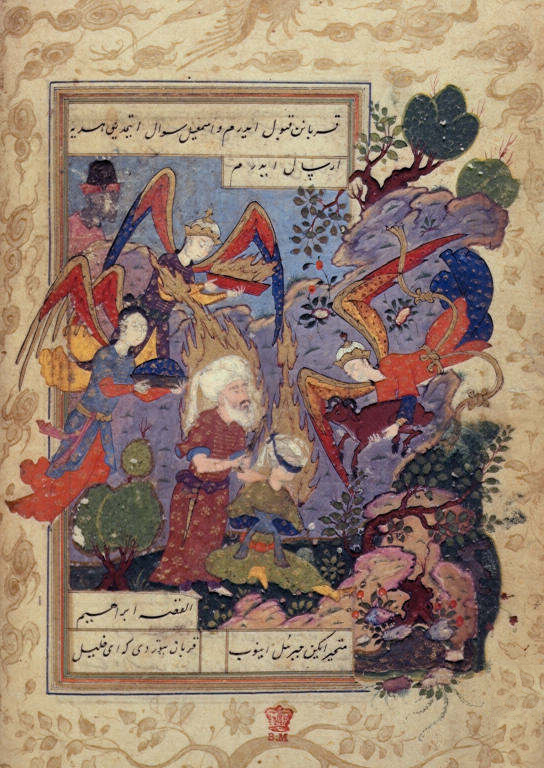Eid al-Adha, Greater Eid
Eid al-Adha, or the ‘festival of sacrifice’, is a religious ritual for Muslims which marks the end of the pilgrimage to Mecca (Hajj). It is a festival of sharing and passing on culinary knowhow from one generation to the next.
The sacrificial animal
The sacrificial animal of Eid al-Adha is the sheep. It emulates an episode in the life of Abraham, who, obeying God’s command, prepared to sacrifice his only son, Ishmael. At the last moment, God sent the angel Gabriel to replace the child with a sheep. This episode is found in all three monotheist religions (Christianity, Judaism and Islam). The sheep symbolises both the act of divine generosity and the replacement of Ibrahim’s son. As such, the animal plays an important role in family life before its immolation. The family gives it a name, feeds it leftovers, walks it and generally pampers it. The sacrifice is not one of the pillars of Islam and is therefore not a religious obligation. It is a gesture of generosity towards others, according to the Muslim saying: “Of all this mutton, it is only the part which we give which is of value. What we have eaten is swallowed, what we have given is valuable” (Brisebarre, 2007).
Tradition and culinary sharing
According to tradition it is the father of the family who performs the sacrificial slaughter of the sheep during the Eid al-Adha festival. Once the animal has been slaughtered in accordance with halal principles, it is cooked and shared among the guests. The various parts of the animal are eaten in a specific order. On the day of the slaughter, kebabs made from the liver and lungs and wrapped in caul fat are boiled and then grilled over a fire. On the second day, the family cuts up the rest of the animal. The head is the most traditional dish and is often served as mechoui, slow-roasted over a fire. Traditionally, in the Maghreb, cooking tasks are allocated according to gender: Men are in charge of grilling meat over the embers outdoors and women prepare the stewed meat in the kitchen, inside the family home. In France, legislation forbids the consumption of offal such as the head, spleen or spinal cord. Younger generations from immigrant families, accustomed to Western products, are gradually turning away from this type of dish, which is not always to their taste. As Eid al-Adha is a time of inclusion, sharing and giving, one third of the meat is given to the poor and needy.
BENKHEIRA, Mohammed Hocine, 1999. Lier et séparer. Les fonctions rituelles de la viande dans le monde islamisé. L’Homme. 1999. Vol. 39, n° 152, pp. 89-114.
BRISEBARRE, Anne-Marie, 1989. La célébration de l’Ayd el-Kébir en France : les enjeux du Sacrifice. Archives de sciences sociales des religions. 1989. N° 68, pp. 9-25.
BRISEBARRE, Anne-Marie, 2007. Sacrifier pour l’Aïd El-Kébir en France. Texte exclusif OCHA [en ligne]. [Consulté le 22 septembre 2015]. Disponible à l’adresse : http://www.lemangeur-ocha.com
HAMES, Constant, 1998. Le sacrifice animal au regard des textes islamiques canoniques. Archives de sciences sociales des religions. 1998. N°101, pp. 5-25.








